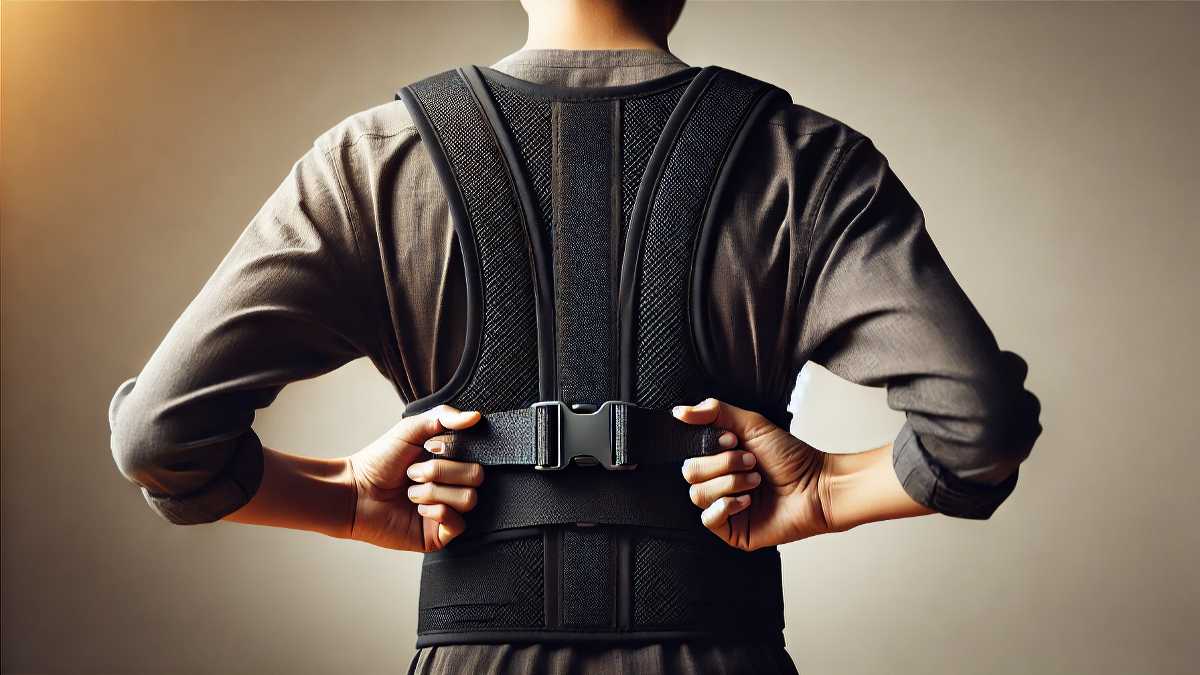Introduction
Back pain is a common issue affecting millions of people worldwide. Whether it’s due to poor posture, heavy lifting, or medical conditions like sciatica or herniated discs, finding relief is crucial. One effective solution is using a back brace for back pain. But with so many options available, how do you choose the right one? This comprehensive guide will help you understand the types, benefits, and how to select the best back brace for your needs.
Why Use a Back Brace for Back Pain?
A back brace is designed to provide support, improve posture, and reduce strain on the spine. Here’s why they are beneficial:
1. Pain Relief
A back brace helps alleviate pain by reducing pressure on the spine and supporting the lower back muscles.
2. Posture Correction
Wearing a brace can train your muscles to maintain proper posture, preventing further strain and injuries.
3. Injury Prevention
For those who lift heavy objects or engage in physical activities, a back brace can prevent injuries by stabilizing the spine.
4. Support for Medical Conditions
Conditions like sciatica, scoliosis, and herniated discs require extra support, which a back brace provides effectively.
Types of Back Braces
Choosing the right type of back brace for back pain depends on your condition and level of support needed.
1. Rigid Back Braces
- Made of hard plastic or metal
- Best for severe back conditions and post-surgery recovery
- Restricts movement to allow healing
2. Soft or Elastic Back Braces
- Made of flexible materials like neoprene or elastic
- Provides moderate support while allowing movement
- Ideal for mild to moderate back pain
3. Posture Correctors
- Designed to align the spine and shoulders
- Helps prevent back pain caused by poor posture
4. Lumbar Support Braces
- Targets the lower back for pain relief
- Often used by office workers and those with sedentary lifestyles
How to Choose the Best Back Brace
Selecting the right back brace for back pain involves considering several factors:
1. Comfort and Fit
Ensure the brace is comfortable, fits snugly, and doesn’t cause skin irritation.
2. Level of Support
- Mild support: For minor discomfort and posture correction
- Moderate support: For recurring pain and muscle strain
- Maximum support: For post-surgery recovery and severe conditions
3. Material Quality
Look for breathable, durable materials like neoprene and elastic for long-lasting comfort.
4. Adjustability
Opt for braces with adjustable straps to customize the fit.
5. Mobility Needs
If you need to move freely while wearing the brace, choose a flexible design over a rigid one.

Top-Rated Back Braces for Back Pain
Here are some highly recommended back braces based on comfort, effectiveness, and durability:
| Brand | Type | Best For | Material |
|---|---|---|---|
| Mueller | Lumbar Support Brace | Lower back pain relief | Neoprene |
| ComfyMed | Adjustable Back Brace | Everyday wear | Elastic |
| Vive | Posture Corrector | Shoulder and spine support | Mesh Fabric |
| Sparthos | Rigid Back Brace | Severe pain & post-surgery | Hard Plastic |
| Old Bones Therapy | Compression Brace | Athletes & active users | Breathable Neoprene |
How to Wear a Back Brace Properly
Wearing a back brace incorrectly can reduce its effectiveness. Follow these steps for optimal use:
- Position It Correctly – Align the brace with your lower back or targeted area.
- Adjust the Straps – Ensure a snug but comfortable fit.
- Avoid Overuse – Wear it as recommended to prevent muscle dependency.
- Maintain Good Posture – A brace helps, but practicing good posture is key.
FAQs About Back Braces for Back Pain
1. Can I wear a back brace all day?
It’s best to wear a back brace for a few hours a day to avoid muscle weakening.
2. Will a back brace help with sciatica?
Yes, a lumbar support brace can help reduce pressure on the sciatic nerve.
3. Can I sleep with a back brace on?
It depends on the type. Some soft braces can be worn while sleeping, but rigid braces should be removed.
4. How tight should my back brace be?
It should be snug but not restrict breathing or circulation.
5. Can a back brace fix my posture?
Yes, posture correctors help align the spine and improve posture over time.
6. Do doctors recommend back braces?
Yes, doctors often recommend back braces for post-surgery recovery, chronic pain, and injury prevention.
Conclusion
A back brace for back pain is a valuable tool for relief, posture correction, and injury prevention. By choosing the right type, ensuring a proper fit, and using it correctly, you can significantly improve your back health. Whether you suffer from chronic pain, engage in heavy lifting, or need posture support, investing in a high-quality back brace can make a difference in your daily life.

